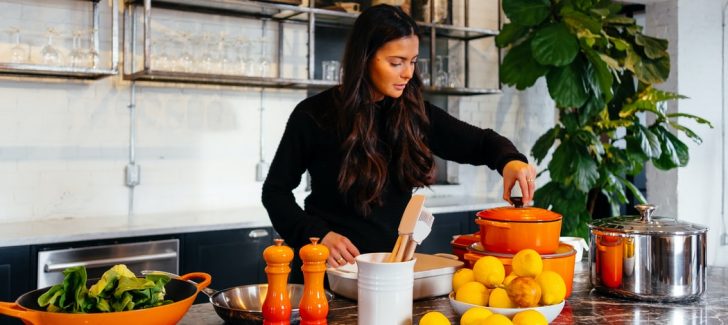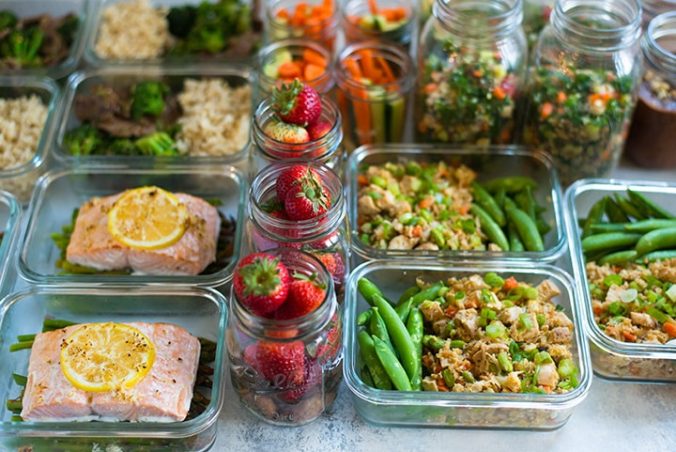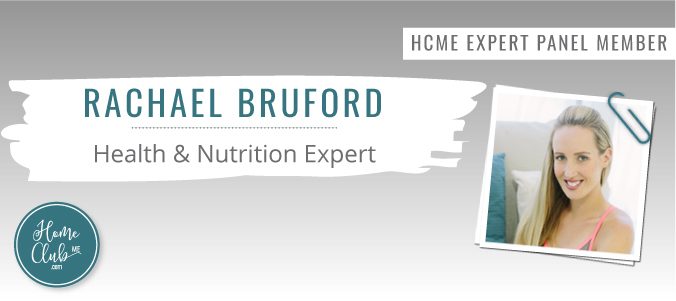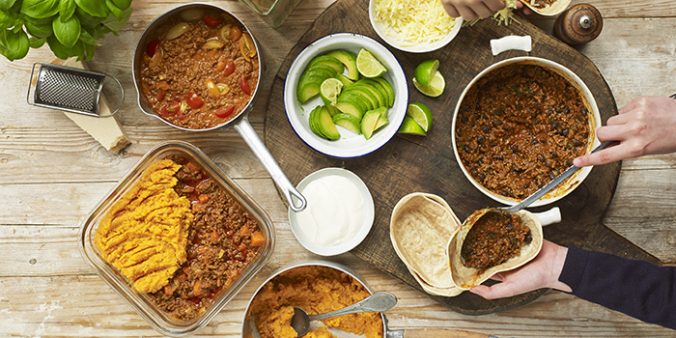
Meal Planning & Batch Cooking To Save Time & Stay On A Healthy Path
Ok, it’s time for me to admit something quite geeky here, but I absolutely LOVE meal planning and batch cooking! I know for some people it can appear to be a little over the top, but for me the entire process is very rewarding and helps me to stay on the right track, nutritionally, during busy times.
When I was expecting my baby late last year, my batch cooking went into overdrive as I prepared and froze an array of meals ready for our little one’s imminent arrival. There are plenty of other times you may wish to meal plan and batch cook, such as when you have guests staying, if you want to steer your family in a healthier direction, or if you’re entering a busy period at work. So today, I’m going to tell you how you can save time and eat healthier meals thanks to batch cooking and meal preparation. All it takes is a little advance planning and a couple of hours!
Why should you meal plan and batch cook?
Firstly, how many times have you returned home after a busy day at work, only to discover that you have no food in the fridge or are simply too tired to cook? When that happens, ordering a take away is usually the easiest option. Whilst this is ok from time to time, when it becomes a habit it can take a toll on your health. At the end of the day, no matter how ‘healthy’ something claims to be, nothing can beat cooking something from scratch and knowing exactly what is in your food.
So many delicious dishes can be frozen, and then all you need to do is heat them up and add any accompanying sides (for example, cook fresh rice if you make a curry). With batch cooking, all of the time-consuming elements such as peeling and chopping the vegetables, simmering sauces, and the actual cooking itself, are already done. It’s like having your own personal supply of ready meals without the added sugar, preservatives and other less desirable ingredients.

Image via Shutterstock
How a health coach food preps
As I have been doing a lot of food prep lately, I’ve pretty much got the process down to a fine art. Here’s how I go about it. If you have children, get them involved in every step – it’s a great way to spend time with them and to introduce them to a healthy lifestyle.
Plan your meals
Start by looking at the week ahead. I have been planning for a month in advance, but a week is a good place to start. Think about your meals. For example, if you would like a smoothie bowl for breakfast, you can portion up most of the frozen ingredients such as banana, blueberries, mango etc into individual bags for each day, and then simply add your choice of milk and toppings each morning.
The meal you will most likely be interested in is dinner. Think about what you usually enjoy and how you can prepare it in advance. I always have some homemade frozen pasta sauce to hand for days when I’m really short on time, and then I also enjoy making curries, chilis and stews. I’ve found that things like Thai Red Curry work really well, despite some saying that coconut milk is not particularly tasty after it has been frozen; to be honest, I’ve not noticed anything wrong.
It’s all about finding what works for you. Soups are another great idea, and you can quickly whip up a salad to accompany them as they slowly reheat. The list really is endless, and you can create entire dishes like lasagne if you wish, or just make the ‘insides’ and heat up with layers of fresh pasta and cheese added separately. One of my favourite dinners is a vegan ‘shepherd’s pie’ where I make the filling in advance and steam sweet potato and carrot whilst heating it up. I then smash the sweet potato and carrot and lay it on top of the hot filling…absolutely delicious and it takes no more than 15 minutes!
Once you have your list of meal ideas, work out what ingredients you need and get the food shop out of the way. Stick to your list, try to go early, and make sure you bring plenty of reusable bags for all of that food you’re buying!
Storage
One of the early mistakes I used to make was to freeze everything as one portion. This meant that when it came to reheating, I had to reheat the entire dish, even if it was just me eating it! To avoid this, once you’ve cooked your food and it has cooled down, cut it into individual portions (if you’re mainly going to be eating by yourself as I do when my husband is away). This does take up more space, but at least you’re not forced to eat food that you don’t want just because you can’t freeze and reheat it again. If you’re planning family meals, great! Simply freeze the entire dish.

Image via https://www.asweetpeachef.com/
Before I put the meals away, I always use a sharpie to write what the meal is (it can be surprisingly hard to tell once something is frozen!) and I also write the date that I cooked it, just to keep track. It can also be useful to list the ingredients in case you have guests who can’t eat certain foods. Ensure the dish is completely chilled before you put it in the freezer, so that you don’t unwittingly raise the temperature and jeopardise everything you have in there.
Remember, if you’re just starting out and don’t feel you have the time to fully commit to making several dishes at once, you can always just make your dinner as usual but make double the amount and freeze the rest. Doing this a couple of times can soon add lots of delicious options to your freezer! I also reuse steamed and roasted veggies by popping them in the fridge in an airtight container with a view to using them in a day or two, either by adding them to a nourishing brown rice bowl or popping them in an omelette.
I hope that this article inspires you to do some of your own food prep and batch cooking – please do let me know how you get on and share your creations! As always, I am happy to chat through food, health and wellness issues and goals as part of my health coaching programs. To book an appointment or a one to one consultation with me should you wish to discuss your health and wellness needs further, please do get in touch. To learn more, visit Chasing Zest or email me at [email protected]. See you next month!




